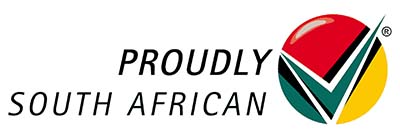A GAP analysis is a powerful tool for assessing your financial performance and identifying areas where you can improve.
It involves comparing your current financial state (where you are) with your desired goals (where you want to be), highlighting the gaps between the two.
By identifying these discrepancies, you can develop actionable strategies to bridge them and achieve your financial objectives.
In this quick read, we’ll dive into how a GAP analysis can be your South African business’s financial fairy godmother.
How GAP Analysis Works
1. Define your desired state:
- Set clear financial goals, such as increasing profitability by 10%, reducing expenses by 5%, or achieving a specific debt-to-equity ratio.
- Consider industry benchmarks, competitor performance, and your own strategic objectives.
2. Analyze your current state:
- Gather and analyze relevant financial data, including income statements, balance sheets, cash flow statements, and key performance indicators (KPIs).
- Look at trends and patterns over time, identify areas of strength and weakness, and assess your overall financial health.
3. Identify the gaps:
- Compare your current financial performance with your desired state.
- Quantify the gaps, for example, the difference between your current profit margin and your target profit margin.
- Analyze the root causes of the gaps, such as inefficient processes, high costs, or lack of revenue streams.
4. Develop action plans:
- Prioritize the most significant gaps and develop actionable strategies to address them.
- Consider different options and evaluate their feasibility, cost, and potential impact.
- Set specific goals, timelines, and responsible individuals for each action plan.
Benefits Of Conducting A GAP Analysis In Financial Records
- Improved financial performance: By identifying and addressing weaknesses, you can improve profitability, efficiency, and overall financial health.
- Enhanced decision-making: Data-driven insights from the analysis can inform better strategic decisions about investments, resource allocation, and growth opportunities.
- Increased accountability: Setting clear goals and action plans with assigned responsibilities creates accountability and drives progress.
- Risk mitigation: Proactive identification of financial weaknesses can help prevent future problems and mitigate potential risks.
Tips For Conducting A Successful GAP Analysis
- Focus on the most important gaps: Don’t try to analyze everything at once. Prioritize the gaps with the biggest impact on your goals.
- Use diverse data sources: In addition to financial data, consider market trends, customer feedback, and operational data to gain a holistic understanding of the gaps.
- Set realistic goals: Ensure your goals are achievable and set in a specific timeframe.
- Monitor and adjust: Regularly track your progress against your action plans and adapt your strategies as needed.
Remember, a GAP analysis is a valuable tool for continuous improvement.
By regularly assessing your financial performance and taking action to bridge the gaps, you can move your business closer to your desired financial goals.
Conclusion
So there you have it, folks. GAP analysis isn’t just a financial buzzword; it’s your South African business’s secret weapon.
Navigate regulations, surf economic waves, and make decisions like a financial pro. It’s not just about numbers; it’s about securing your financial future in the rainbow nation.








